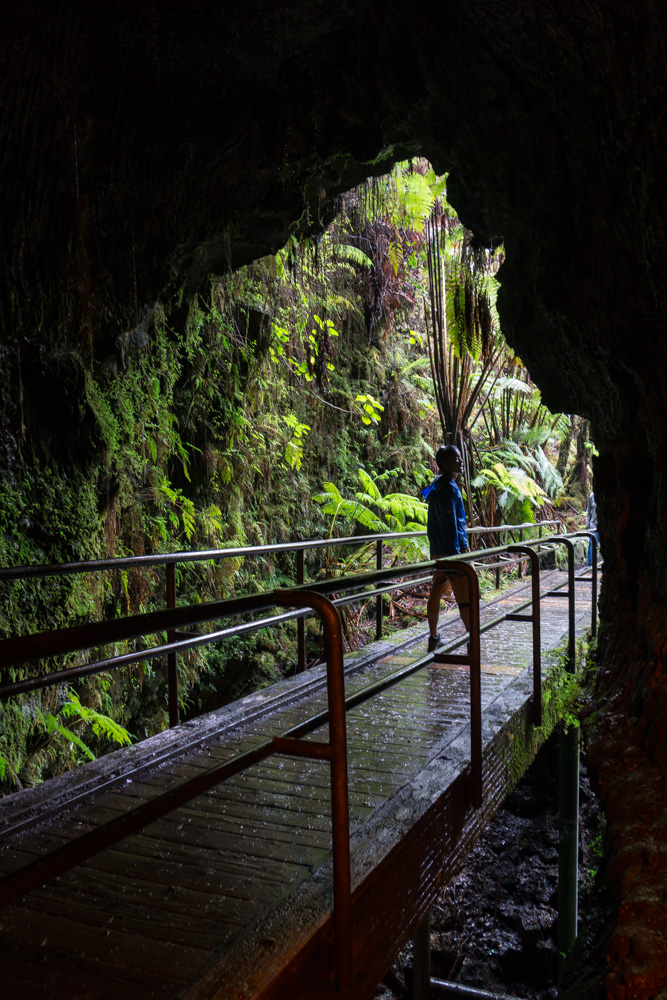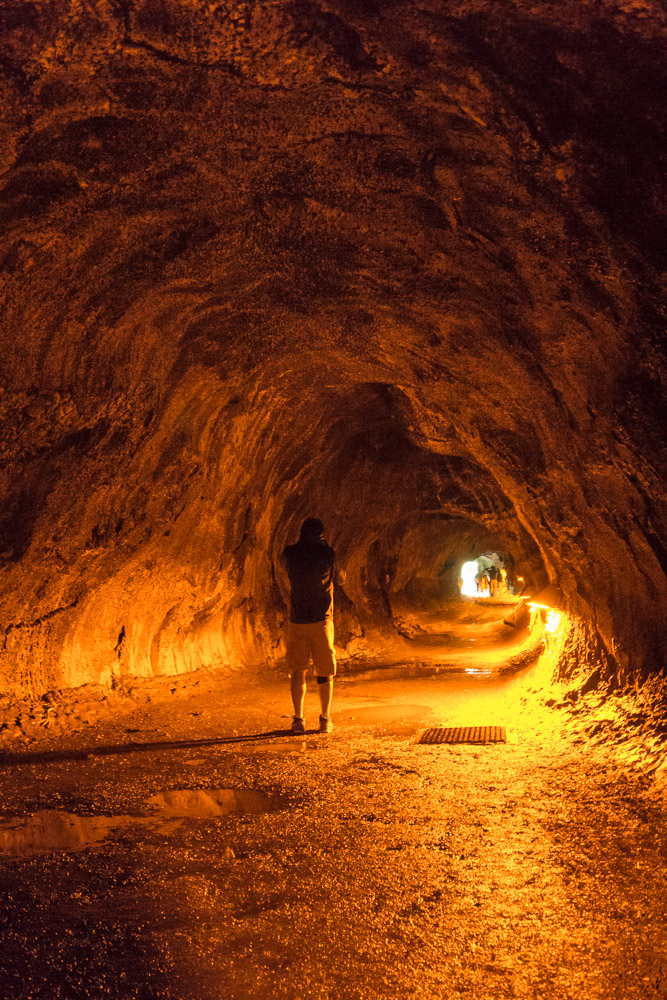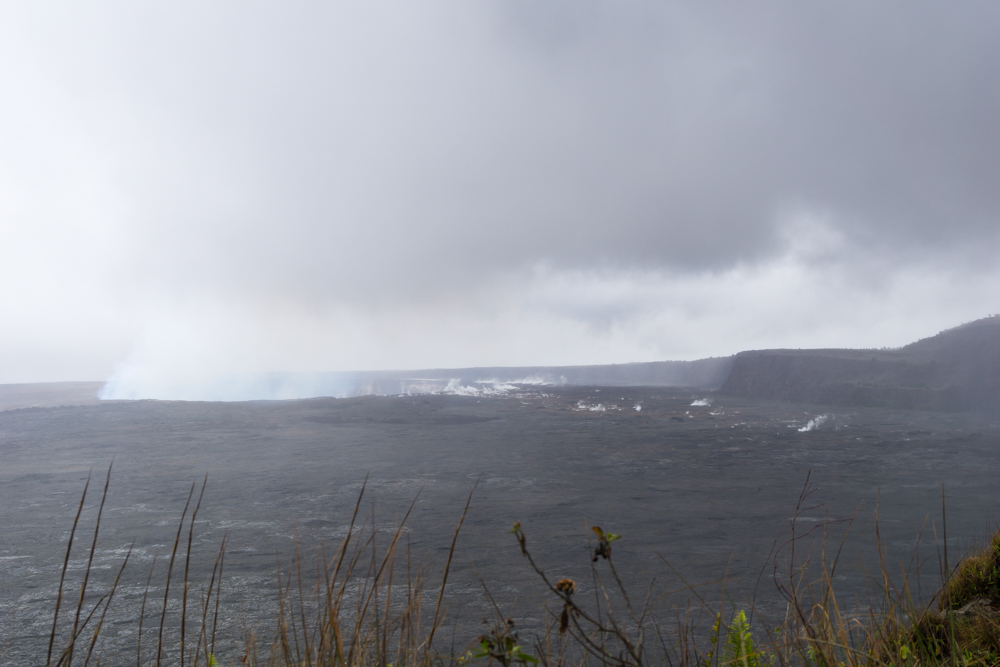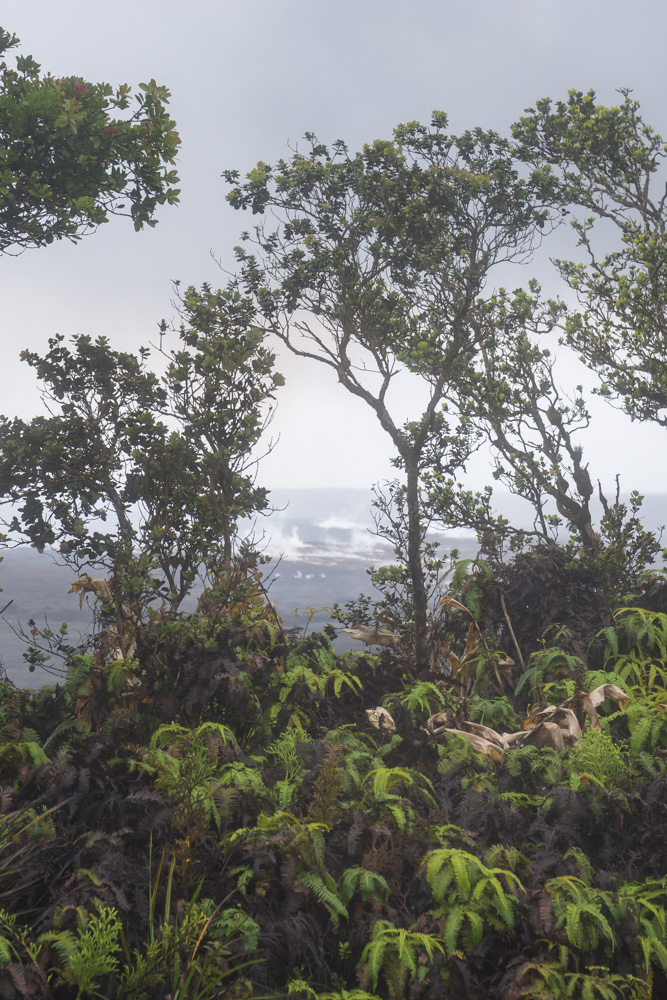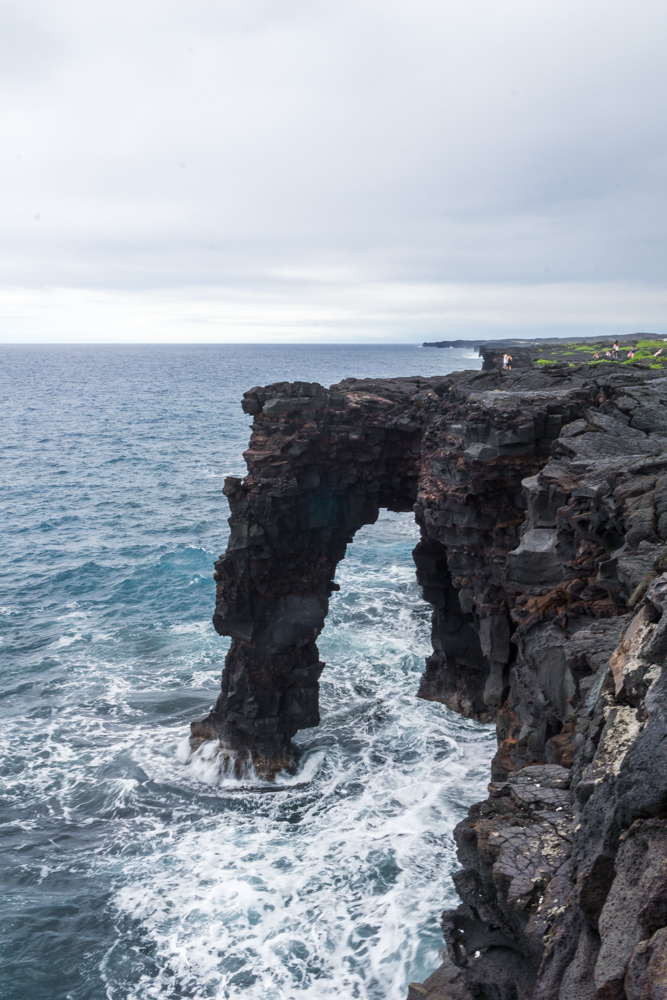Volcanoes National Park on the Big Island of Hawaii is a truly unique park. Covering 500+ square miles, the park offers so much to see, but here are a couple spots you want to make sure not to miss during your day trip here.
Hawaii Volcanoes National Park contains two active volcanoes, one of which is Kilauea, one of the world's most active volcanoes, and the other is Mauna Loa, Earth's most massive active volcano. Together these volcanoes have shaped a variety of landscapes and environments that can be seen at the park.
Misty, foggy, forest roads
Weather is also highly variable, as the day we visited was filled with fog and thick, low clouds covering the top portion of the park. However when drove down to the coast, we descended out of the rain cloud and found ourselves under the warm sun by the ocean. Stop by the Visitor Center to get the most up to date information on volcanic activity and the best place to see lava flows based on current conditions.
As much as I wanted to see some live lava up close, when we visited in April 2018, there was no lava flowing into the ocean or surface lava flow at all. However, we were lucky enough to visit during a period of activity for the summit lava lake in the Halema‘uma‘u crater, and we were able to spot some of the lava from a distance. We actually happened to visit a couple days before Kilauea erupted later that week!
Info
Cost: $25 per car (free for America the Beautiful annual pass holders)
Park Hours: open 24 hours
Jaggar Museum
During our visit, the lava lake in the crater happened to be overflowing, and we were able to spot lava at the bottom of the Kilauea caldera from the Jaggar Museum overlook. Unfortunately, we had some bad weather that day, but we were able to get a glimpse of the lava for a couple seconds through the haze during a break in between the rain clouds.
If you look closely in the center of the photo you can see the lava splashing up!
Since the park is open 24 hours a day, this is also a great spot to visit at night to photograph the red lava glowing against the evaporating clouds of steam.
The park also has webcams where you can see what the volcanoes and summits look like at the time. Even if there is no chance of seeing lava, driving to the Jaggar Museum is still worth the side trip, as you’ll get the best view into the Halema'uma'u crater.
Thurston Lava Tube
This is a popular stop with limited parking, so get here early. A short 15 minute loop takes you through a tunnel where lava used to flow. The tunnel is lit from the inside, so visitors of all ages can experience walking through a real lava tube. Also, the entrances and exits are especially photogenic with all of the ferns that surround the openings. The ground can be wet, so wear appropriate footwear and clothing.
Standing in the middle of the lava tube
Steam Vents
At this stop you'll be able to feel the warm steam rising from underground as a result of groundwater vaporizing on contact with the hot volcanic rocks. There are also a few walking trails in this area to walk by even more steam vents, as well as an impressive overlook of the caldera.
Chain of Craters Scenic Drive
One of the main highlights of the day for me was driving down to the coast on the Chain of Craters Road. Although the entire drive down to the coast will take a hefty 40 minutes one way from the visitor center, you’ll be able to see old craters and lava flows that flowed all the way to the coast. I loved this drive as I really got a sense of the scale and magnitude of the volcano and its eruptions.
The vast field of cooled lava
Looking out over the rim towards the coast
Driving down the Chain of Craters Road
The path of the lava flow over the rim. Shuttle bus for scale!
There are several great spots to stop for epic views looking out towards the ocean, as well as spots to walk on the cooled lava and see all the different forms of cooled lava rock, which is always fun for people of all ages. The road descends a good amount of elevation (around 3,700 feet), and you'll be able to notice the chance in scenery and terrain as you pass through all the different environments.
Holei Sea Arch
Once you’ve reached the coast, you should spend some time wandering up and down the edge of the island, soaking in all of the impressive cliff views. I loved watching the waves crashing against the cliffs and spraying up 30 feet in the air.
This is also the site of the Holei Sea Arch, a 90 foot arch that was carved out over time by wind and water. Looking up and down the coast you’ll be able to spot other sea caves, sea arches, and sea stacks. We enjoyed our sandwiches on the picnic tables here before heading back up into the rain clouds.
So many lush plants thriving out of the volcanic rock!
If you are ever on the Big Island, I highly encourage you to visit Hawaii Volcanoes National Park, as there are so many unique hiking opportunities and chances to learn about how these powerful natural features shape our world.
Some of the photos in this post are by Feryl Aradillos





